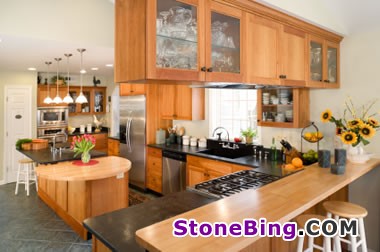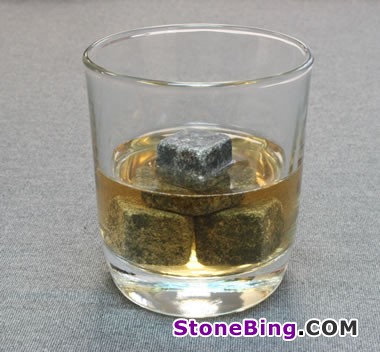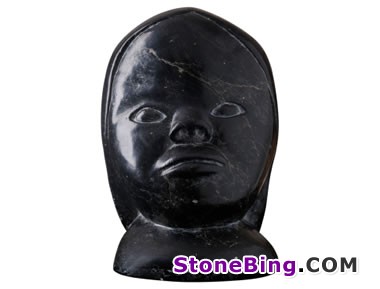•Countertops in kitchens and laboratories
•Sinks
•Cooking pots, cooking slabs, boiling stones
•Bowls and plates
•Cemetery markers
•Electrical panels
•Ornamental carvings and sculptures
•Fireplace liners and hearths
•Woodstoves
•Wall tiles and floor tiles
•Facing stone
•Bed warmers
•Marking pencils
•Molds for metal casting
•Cold stones
Soapstone Kitchen and Laboratory Countertops

The dark countertops and sink in this photo are made from soapstone. Soapstone is heat resistant, stain resistant, nonporous and resistant to attack from acids and bases. It is often used as a natural stone countertop in kitchens and laboratories.
Soapstone is often used as an alternative natural stone countertop instead of granite or marble. In laboratories it is unaffected by acids and alkalis. In kitchens it is not stained or altered by tomatoes, wine, vinegar, grape juice and other common food items. Soapstone is unaffected by heat. Hot pots can be placed directly on it without fear of melting, burning or other damage.
Soapstone is a soft rock and it is easily scratched in countertop use. However, a gentle sanding and treatment with mineral oil will easily remove shallow scratches. Soapstone is not suitable for use as a workbench top where it will receive rough treatment and where sharp or abrasive objects will be placed upon it.
Soapstone Tiles and Wall Panels
Soapstone tiles and panels are an excellent choice where heat and moisture are present. Soapstone is dense, without pores, does not stain and repels water. Those properties make soapstone tiles and wall panels a good choice for showers, tub surrounds and backsplashes.
Soapstone is heat resistant and does not burn. That makes it an excellent wall covering behind wood burning stoves and ovens. Fireplaces are also lined with soapstone to create a hearth that quickly absorbs heat and radiates it long after the fire is out. This property of soapstone was recognized in Europe over 1000 years ago and many early hearths there were lined with soapstone.
Soapstone Woodstoves
Soapstone does not burn or melt at wood burning temperatures and it has the ability to absorb heat, hold heat and radiate heat. These properties make it an excellent material for making wood-burning stoves. The stove becomes hot and radiates that heat into the room. It also holds heat, keeping the coals hot and often allowing the owner to add more wood without the need for kindling.
Soapstone Cooking Pots
Soapstone cooking pots absorb heat readily from the stove and radiate it into the soup or stew. Because their walls are thick they take a little longer to heat than a thin metal pot. However, they heat their contents evenly and retain their heat when removed from the stove - the contents of the pot keep cooking until the pot itself begins to cool. Soapstone pots are highly prized by people who learn how to use them.
Stone Age people made the first cooking pots from soapstone without the aid of metal tools. The soft rock could be worked with sharp stones, antlers or bone. Skilled craftsmen carved the pots directly from the outcrop. Small soapstone pots were highly prized and traded widely. Large soapstone pots were very heavy and difficult to move. Archaeologists believe that large soapstone pots were used at sites where the residents had intentions of living for a long time.

Whiskystones are small soapstone cubes that are refrigerated and then used to chill a glass of whisky. They do not melt and dilute the drink. Since soapstone has a very high specific heat capacity and changes temperature very slowly, a few whiskeystones can keep a drink cold for 30 minutes or more.

A traditional Inuit carving of a female's head done in black steatite, a very fine-grained variety of soapstone.

The famous "Christ the Redeemer" statue that overlooks the city of Rio de Janeiro, Brazil is made of reinforced concrete and faced with soapstone. The statue is 120 feet tall and was built on Corcovado Mountain. CIA image.







